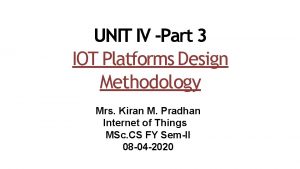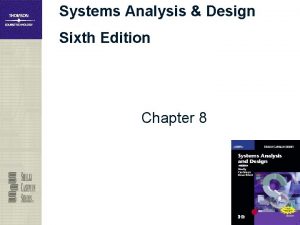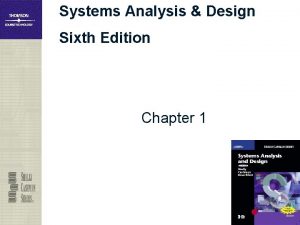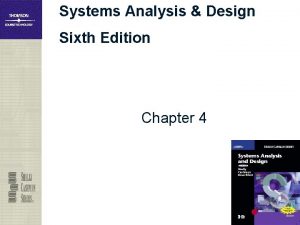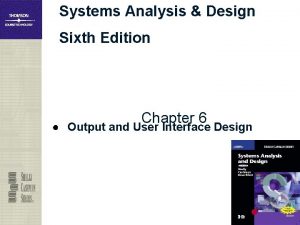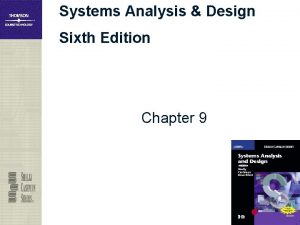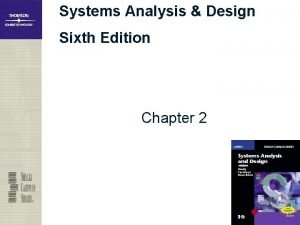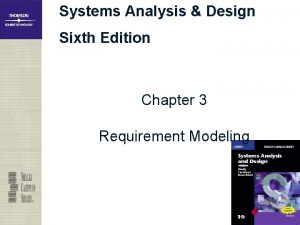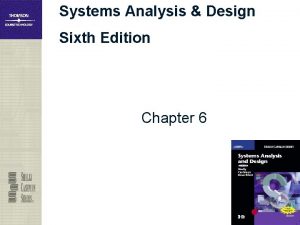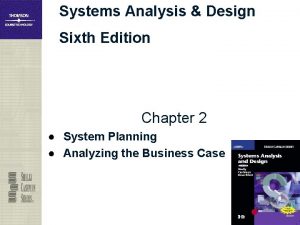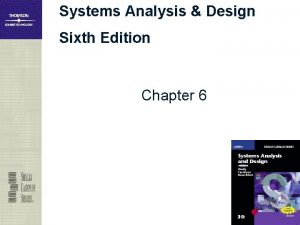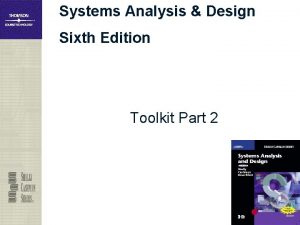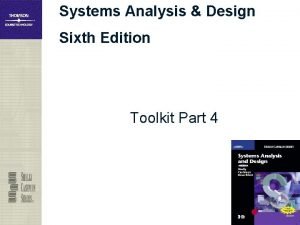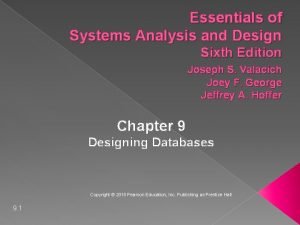Systems Analysis Design Sixth Edition Chapter 10 Systems


















- Slides: 18

Systems Analysis & Design Sixth Edition Chapter 10 Systems Operation, Support, and Security

Phase Description ● Systems Operation, Support, and Security is the final phase in the systems development life cycle (SDLC) ● You will be supporting a functioning information system ● You will continuously assess and improve the system, and you will be alert to any signs of obsolescence(過期) ● You will also address multi-level security issues 2

Overview of Systems Support and Maintenance ● After delivering the system, the analyst has two other important tasks: he or she must support users and provide necessary maintenance to keep the system operating properly 3

User Support Activities ● User Training – In addition to the initial training that is performed when a new system is introduced – New employees must learn how to use the company’s information systems – User training package – Training users about system changes is similar to initial training 4

User Support Activities ● Help Desks – Also called information center (IC) – Enhance productivity and improve utilization of a company’s information resources – Might have to perform the following tasks: • Show a user how to create a data query or report that displays specific business information • Resolve network access or password problems • Demonstrate an advanced feature of a system or a commercial package • Help a user recover damaged data 5

User Support Activities ● Online Chat Support – Interactive support also can be delivered in the form of an online chat – Virtual Classroom 6

Maintenance Activities ● The systems operation, support, and security phase is an important component of TCO (total cost of ownership) because ongoing maintenance expenses can determine the economic life of a system ● Operational costs ● Maintenance expenses ● Figure 10 -7, p. 477 ● Maintenance activities 7

Maintenance Activities ● Corrective Maintenance – Diagnoses and corrects errors in an operational system – Can respond to errors in various ways, depending on nature and severity of the problem – In a typical procedure, a user submits a systems request that is evaluated, prioritized, and scheduled 8

Maintenance Activities ● Adaptive Maintenance – Adds enhancements to an operational system and makes the system easier to use – The procedure for minor adaptive maintenance is similar to routine corrective maintenance – Can be more difficult than new systems development because the enhancements must work within constraints of an existing system 9

Maintenance Activities ● Perfective Maintenance – Involves changing an operational system to make it more efficient, reliable, or maintainable – Can improve system reliability – Software reengineering – Depending on results of software reengineering, the system might be revised, migrated to a different environment, or replaced altogether – Programs that need a large number of maintenance changes usually are good candidates for reengineering 10

Maintenance Activities ● Preventive Maintenance – Requires analysis of areas where trouble is likely to occur – IT department normally initiates preventative maintenance – Often results in increased user satisfaction, decreased downtime, and reduced TCO – Sometimes does not receive the high priority it deserves 11

Managing System Support ● Maintenance Team – System administrator – Systems analysts • Analysis • Synthesis – Programmers • • Applications programmer Systems programmer Database programmer Programmer/analyst 12

Managing System Support ● Managing Maintenance Requests – – – Involves a number of steps (p. 484, Fig. 10 -13) Maintenance request Initial determination Role of the systems review committee Completion of the work User notification 13

Managing Systems Support ● Version Control – Version control is the process of tracking system releases – Systems librarian – Archived 14

Backup and Disaster Recovery ● The heightened focus on disaster recovery has spawned a whole new disaster recovery industry, which includes many new tools and techniques 15

System Obsolescence ● Even with solid support, at some point every system becomes obsolete ● Signs: 1. The system’s maintenance history indicates that adaptive and corrective maintenance is increasing steadily 2. Operational costs or execution times are increasing rapidly, and routine perfective maintenance does not reverse or slow the trend 16

System Obsolescence ● Signs: 3. A software package is available that provides the same or additional services faster, better, and less expensively than the current system 4. New technology offers a way to perform the same or additional functions more efficiently 5. Maintenance changes or additions are difficult and expensive to perform 6. Users request significant new features to support business requirements 17

System Obsolescence ● Systems operation and support continues until a replacement system is installed ● At some point in a system’s operational life, maintenance costs start to increase, users begin to ask for more features and capability, new systems requests are submitted, and the SDLC begins again 18
 Peter pickle tongue twister
Peter pickle tongue twister Rubber baby buggy bumpers tongue twister lyrics
Rubber baby buggy bumpers tongue twister lyrics Case tools are limited to systems analysis.
Case tools are limited to systems analysis. Modern systems analysis and design 7th edition
Modern systems analysis and design 7th edition Biochemistry sixth edition 2007 w.h. freeman and company
Biochemistry sixth edition 2007 w.h. freeman and company Computer architecture a quantitative approach sixth edition
Computer architecture a quantitative approach sixth edition Automotive technology sixth edition
Automotive technology sixth edition Automotive technology sixth edition
Automotive technology sixth edition Apa sixth edition
Apa sixth edition Computer architecture a quantitative approach 6th
Computer architecture a quantitative approach 6th Precalculus sixth edition
Precalculus sixth edition Principles of economics sixth edition
Principles of economics sixth edition Computer architecture a quantitative approach sixth edition
Computer architecture a quantitative approach sixth edition Classify iot platforms design methodology.
Classify iot platforms design methodology. Hamlet sixth soliloquy
Hamlet sixth soliloquy Using mis (10th edition) 10th edition
Using mis (10th edition) 10th edition Mis
Mis Modes of speciation ppt
Modes of speciation ppt Systems analysis & design in an age of options pdf
Systems analysis & design in an age of options pdf













